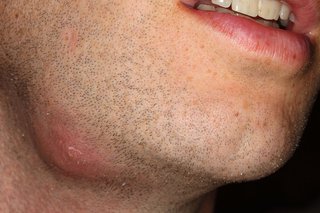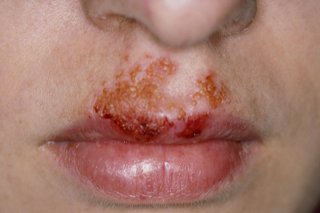The cause of staph infections is bacteria called staphylococcus. They most often affect the skin.
Staph infections can go away on their own. But sometimes you may need treatment with antibiotics.
Symptoms of a staph skin infection
Staph bacteria often cause skin infections.
Staph bacteria can also cause more serious infections, like blood poisoning and toxic shock syndrome. These are much less common than skin infections.
Symptoms of a staph skin infection can include the following:
Non-urgent advice: When to talk to your GP
Talk to your GP if you think you have a staph skin infection and:
- it's getting worse or spreading quickly
- it lasts more than a week
- you have a weakened immune system – for example, you have had an organ transplant or you're having chemotherapy
You might need antibiotics to treat the infection.
See your GP if you keep getting staph infections.
How staph infections spread
The bacteria that cause staph infections live harmlessly on many people's skin. They often live in the nose and armpits and on the bottom.
They usually only cause an infection if they get into the skin. For example, through a bite or cut.
Staph bacteria can spread to others through:
- close skin contact
- sharing things like towels or toothbrushes
- droplets in coughs and sneezes (less common)
Preventing staph infections
It can be difficult to prevent staph infections because many people have the bacteria on their skin.
But there are things you can do to reduce your chances of getting an infection or spreading the bacteria to others.
Do
-
wash your hands with soap and water regularly
-
keep your skin clean by having a bath or shower every day
-
keep any cuts clean and covered
-
use disposable tissues to blow your nose
Don't
-
do not share towels, washcloths, bed linen, toothbrushes and razors
Content supplied by the NHS and adapted for Ireland by the HSE







